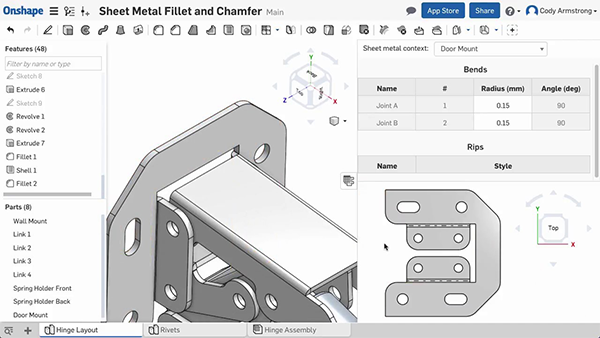Chamfering refers to the process of creating an angled surface on a material.Specifically, it involves treating the sharp edges into angled planes such as C-face (square) or R-face (round), or into R-shaped convex shapes.

The C chamfer means machining a surface with a specified angle on the corner of the material. Most of the time, the term "chamfering" refers to the C-type chamfer.
On the drawing, it is marked as ←C0.5 at the edge position, or marked as "unspecified face C0.5", etc. Here, C0.5 means machining a sloping surface with a length of 0.5 mm at a 45° angle starting from the edge. Please note that it does not refer to the length of the sloping surface.
The R chamfer means machining the corner part of the material into a circular arc shape. On the drawing, it is specified as "R chamfer should be made", etc. The "R chamfer" machining is sometimes also called "R machining" or "Round machining".
The line chamfer means machining a surface on the corner of the material that is invisible to the naked eye. Generally, the line chamfer is considered to be around C0.2 - 0.3, but the difference from the C chamfer and R chamfer is that there are no clear specifications for the shape and size of the chamfer. On the drawing, it is often marked as "make line chamfer on the unspecified corner" or "each edge must be burr-free".

After machining, the material will form sharp corners and burrs. Touching these areas with bare hands may cut the skin. Removing the sharp corners and burrs through chamfering can improve safety. Official Account: "Mechanical Engineering Digest", the Gas Station for Engineers!
If there are sharp parts or burrs remaining, it may cause scratches when the parts are in contact with each other, or the burrs may fall off and cause unexpected problems.
In addition, during the cutting and stamping processes, the edges of the workpiece may warp due to plastic deformation. Therefore, there is a risk of poor adaptability or damage to the parts due to forced assembly.
Chamfering treatment can increase the possibility of preventing these problems.
Taking the chamfered part as a guide, the assembly can be carried out smoothly. When a round rod passes through a hole, if the inner diameter of the hole and the outer diameter of the round rod have a very small difference, even if the position and inclination of the rod deviate slightly from those of the hole, it cannot be inserted smoothly. After chamfering, the insertion can be carried out within the chamfer range.